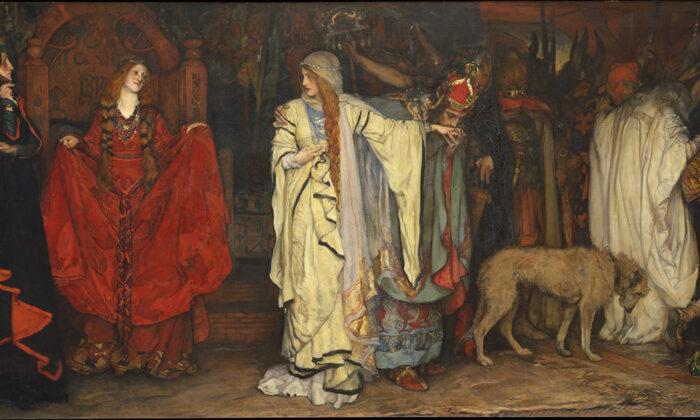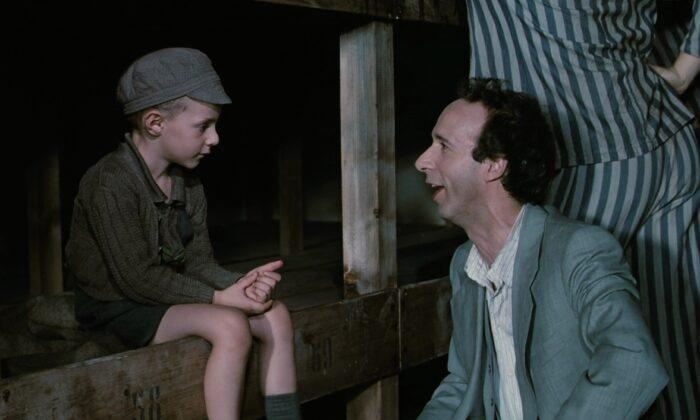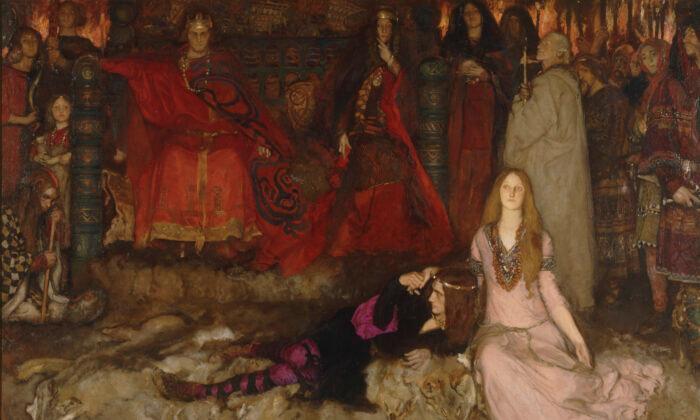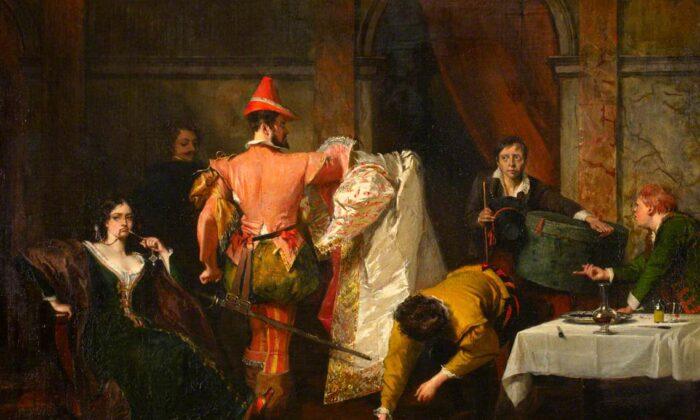Because we are incarnate beings, our spirits receive meaning through our bodies and their physical senses. If we don’t see (or hear or taste or smell or feel) it, we don’t believe it. We don’t even get it. To be effective, any work of art must convey meaning in some form.
Poetry too—at least good poetry—must unite the poet’s idea or notion or insight with a form in which it can be effectively conveyed. When that happens, we empathically experience meaning. Looking carefully into our own experience of a passage of good poetry, we can sometimes discern the bones and muscles and tendons that make an effective poetic utterance.
In Shakespeare’s plays, the default form is blank verse, that is, unrhymed iambic pentameter lines (five iambs—ba-BUM—per line). When Shakespeare wants to make a particularly formal point, he has his character speak in rhymed couplets—every two lines rhyming. The general effect of this form is a sense of order, balance, and stability.
Making Sense of ‘King Lear’
Let’s take an example from “King Lear,” the tragedy of a king who tries to impose his arrogant will upon his daughters, his country, nature, and the gods. The English King Lear ends up having to suffer the loss of everything in order to be purged, healed, and made able to love.Gods, gods! ’tis strange that from their cold’st neglect My love should kindle to inflam’d respect. Thy dow’rless daughter, King, thrown to my chance, Is queen of us, of ours, and our fair France: Not all the dukes of wat’rish Burgundy Can buy this unpriz’d precious maid of me. Bid them farewell, Cordelia, though unkind: Thou losest here, a better where to find.
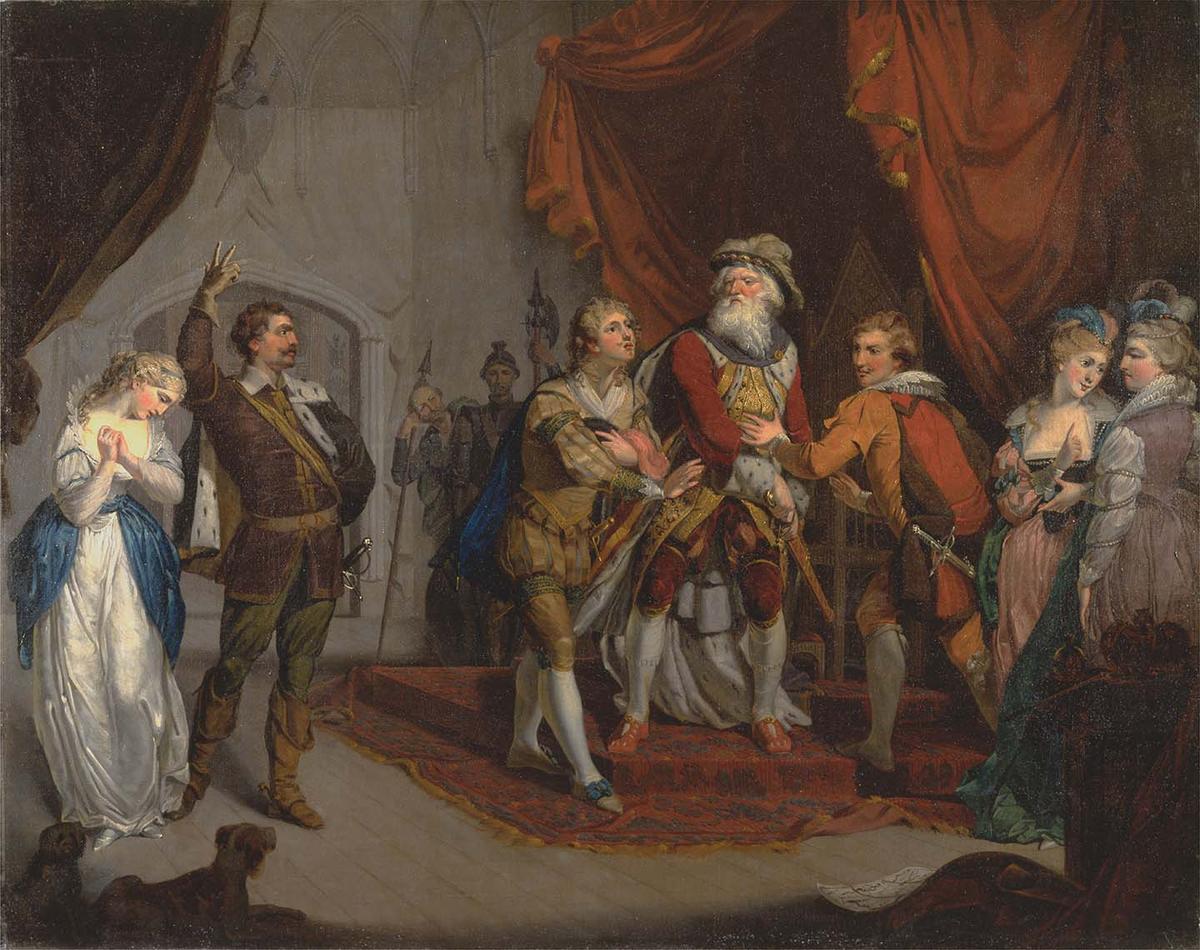
The King of France is doing a noble, good, and wise thing, and he is doing it formally. Receiving no dowry, he acknowledges and embraces the virtuous daughter of King Lear and formally proclaims her to be his wife and Queen of France. The official proclamation of a royal betrothal is made in the form of majestic rhymed couplets.
What is King Lear’s response? Lear has been acting extremely foolishly and willfully. He has just announced that he is going to divide up his kingdom (always a bad sign to Shakespeare’s audience). After basking in the false flattery of his evil daughters and rejecting the simple honesty of his one virtuous daughter, Cordelia, he disowns her and reduces her dowry to nothing. He is angry. His ego is at war with nature, with truth, with his favorite daughter, and with himself, and he will have to go through almost unbearable suffering to be purged of the sins he is committing here.
Thou hast her, France: let her be thine; for we Have no such daughter, nor shall ever see That face of her again. [To Cordelia] Therefore be gone, Without our grace, our love, our benison.
“Benison” means blessing. Lear’s response ought to be formal and stately, as befits a king officially and publicly bestowing his daughter on another king. Instead, because Lear is in a rage, we experience his speech as chaotic, especially compared to the previous lines of France, in part because, technically speaking, he has gone from end-stopped lines to enjambed lines. That means from lines with grammatical phrases that end where the metrical lines end, to lines in which phrases end in the middle of the verse line and new phrases don’t stop at the end of the line but wrap around onto the next. France’s order is followed by Lear’s chaos. The rhymed couplets have been exploded.But wait. Look at the last words of Lear’s lines: we/see, gone/benison. Couplets! Disguised, mangled, troubled, disordered, but couplets nonetheless. What has Shakespeare done?
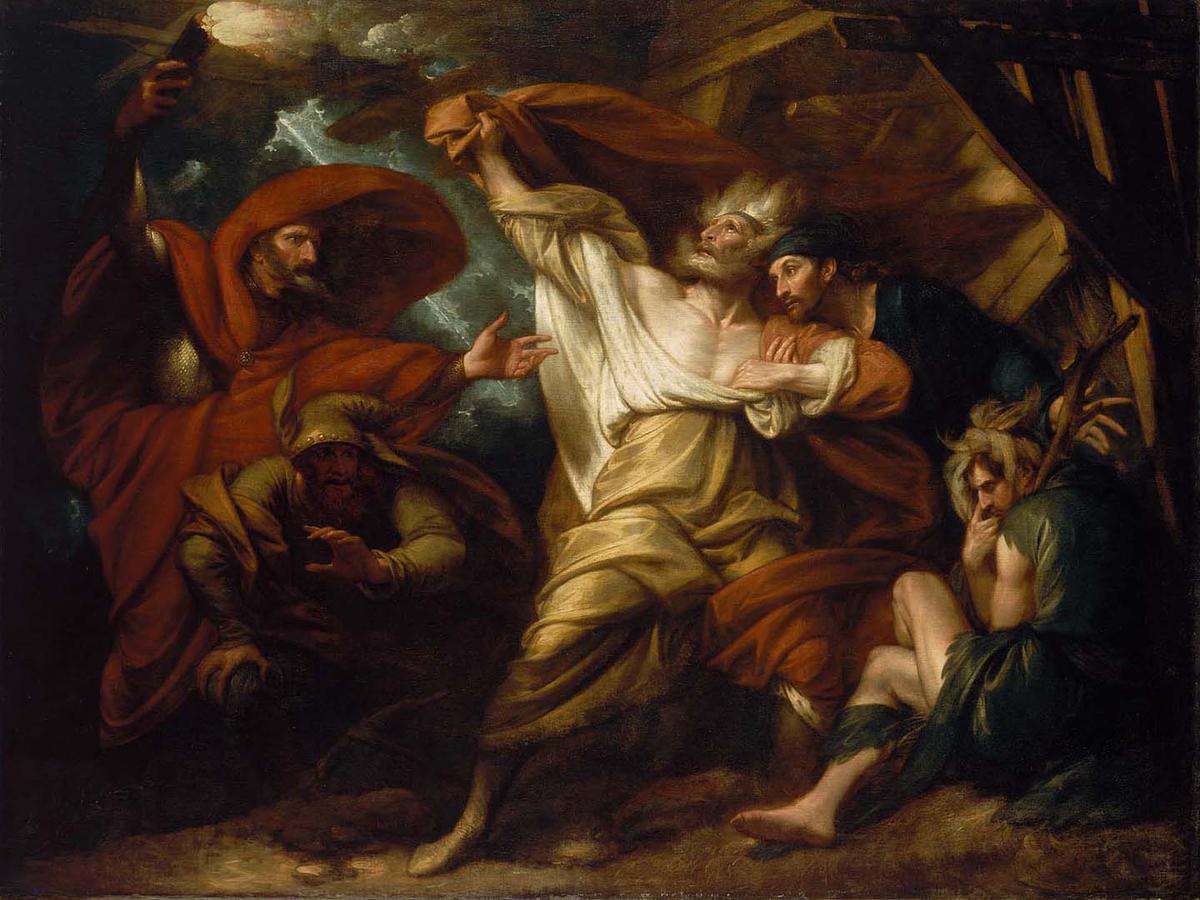
He has incarnated the mentalities of the two kings within the very form of the verse. France’s mind is in order and he is saying what is good, right, and noble. To convey that, Shakespeare has him speak in clear, simple, balanced rhymed couplets—lines end-stopped, syntax smooth.
Lear’s mind is at war with itself, and so his speech is at war with itself. He must speak in rhymed couplets because he is a king answering a king. And he does. But his couplets are enjambed, disjointed, conveying the disjointed chaos and self-battling passions within his mind. Rational France speaks in ordered couplets. Raging Lear is at war with harmonious form.
As one’s body may be in perfect health when one’s mind is filled with fear or anger or frustration, so a king’s rhymed couplets may be superficially present even as their mangled form expresses mental and moral disorder in the speaker.

